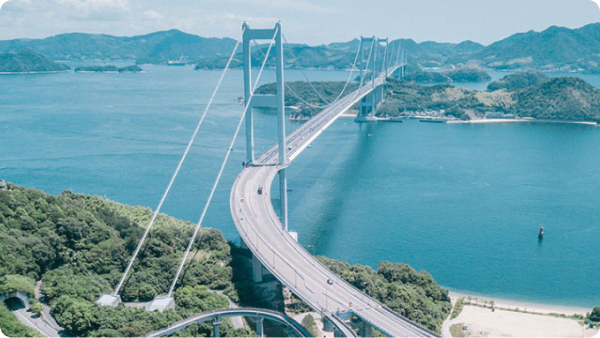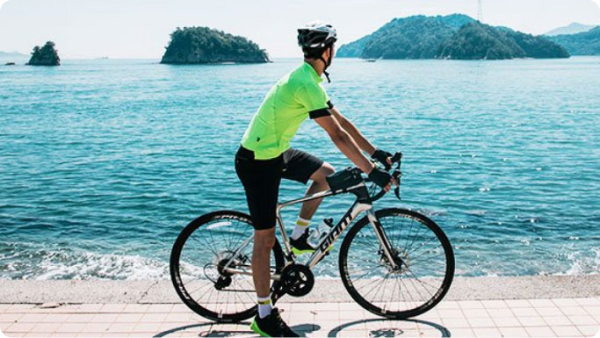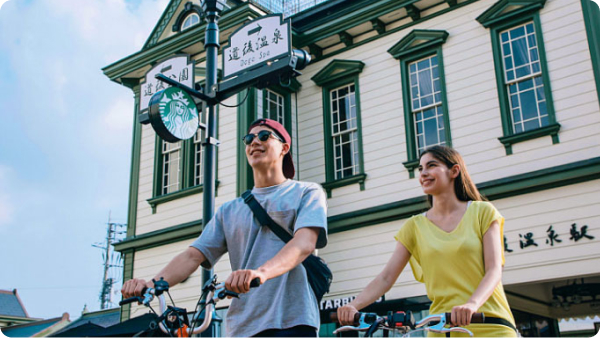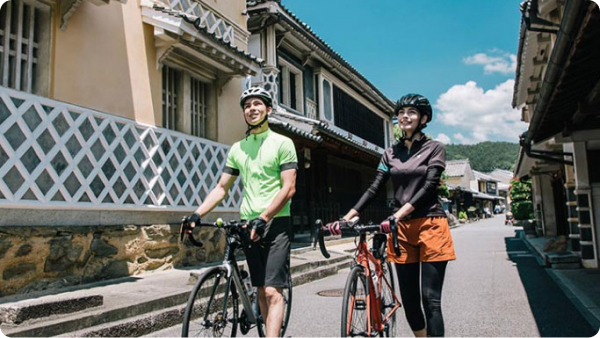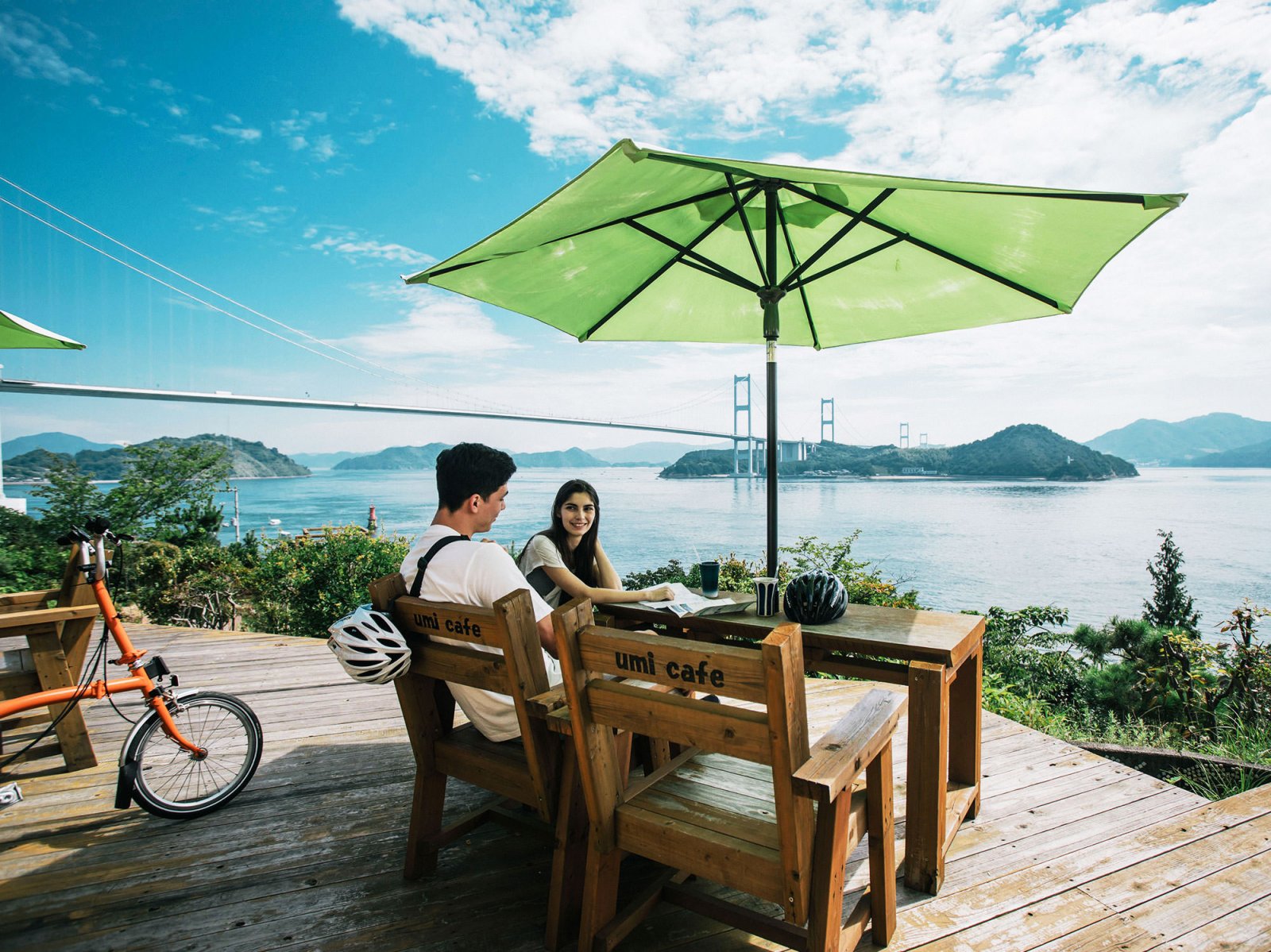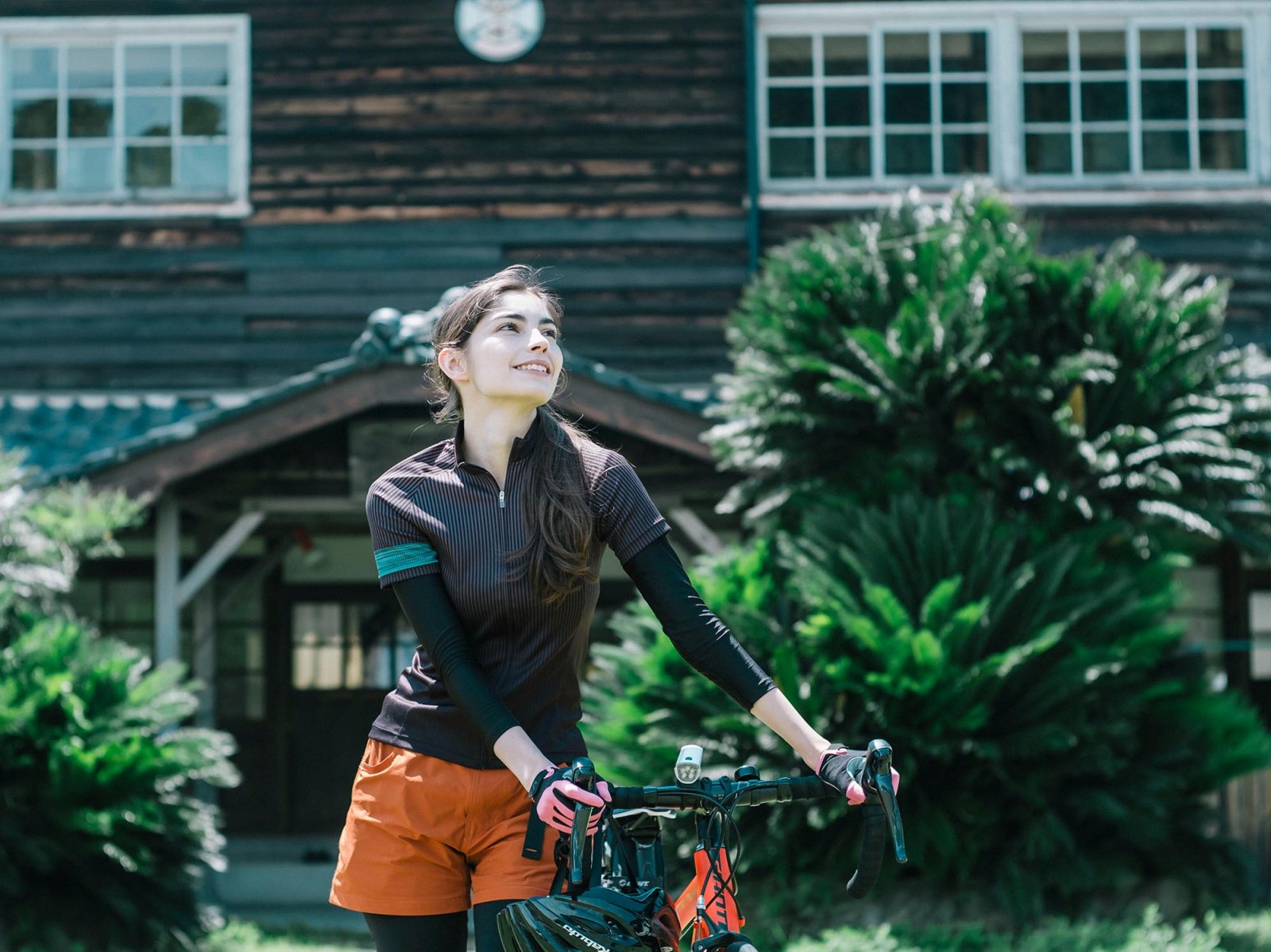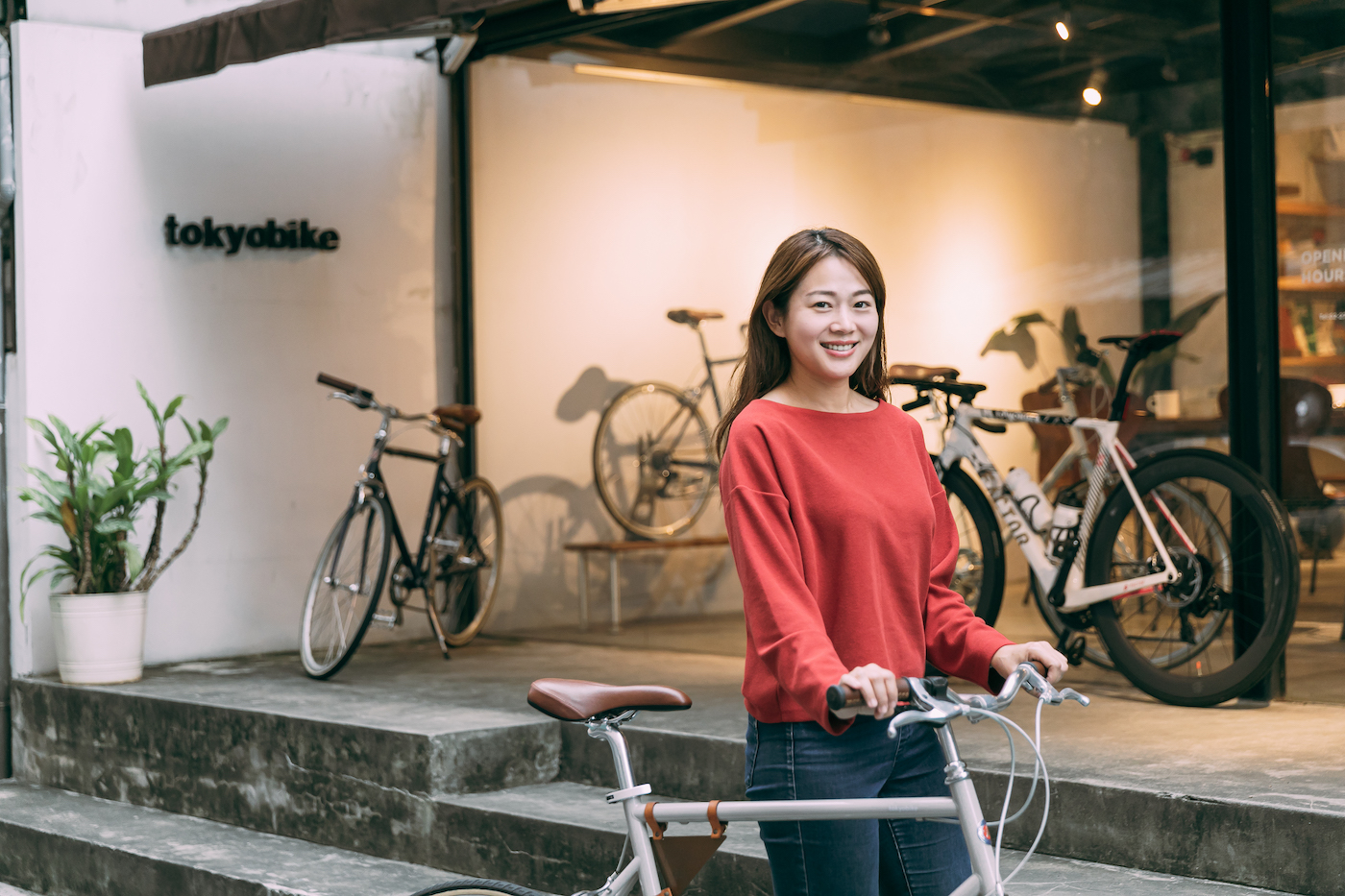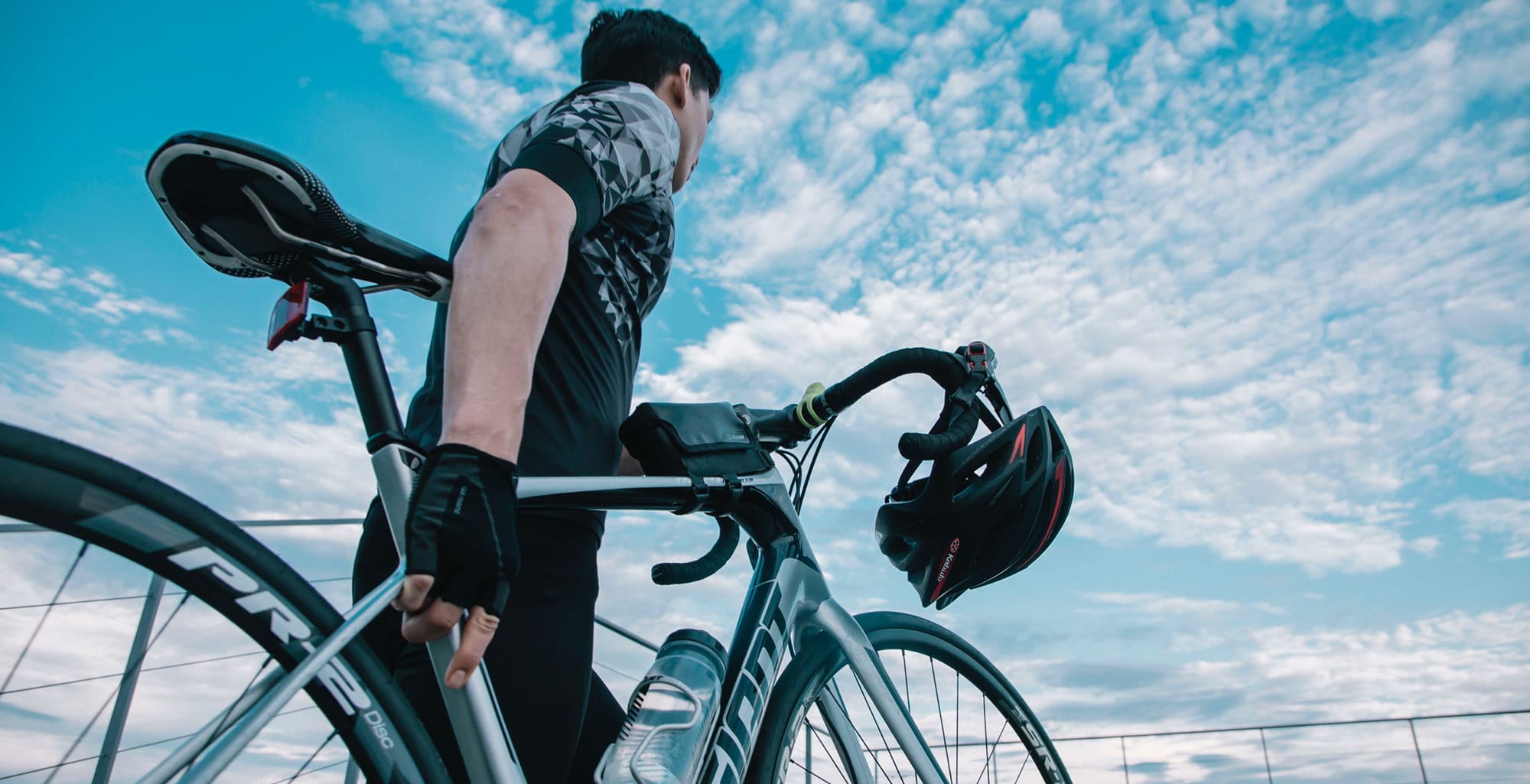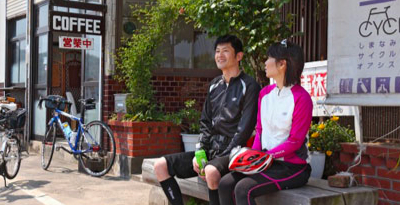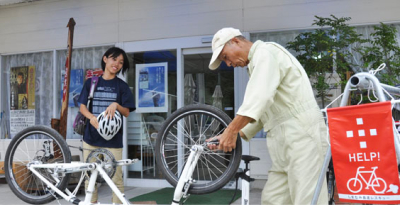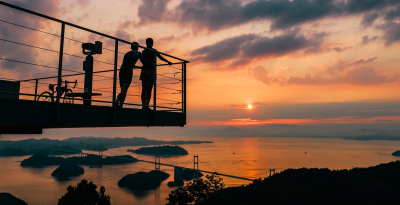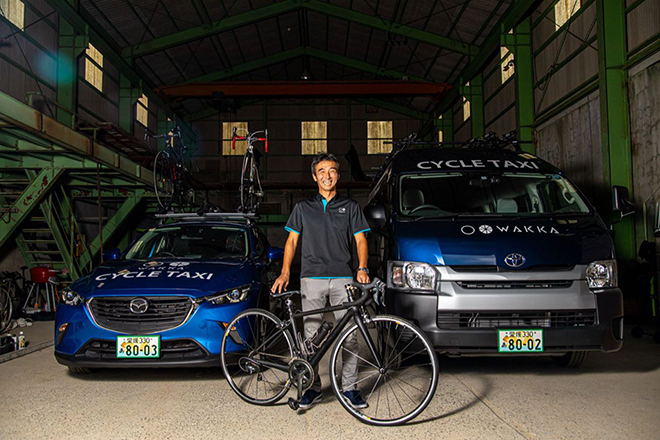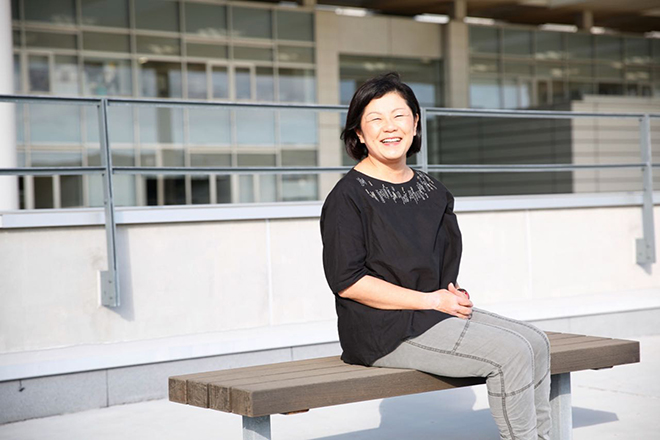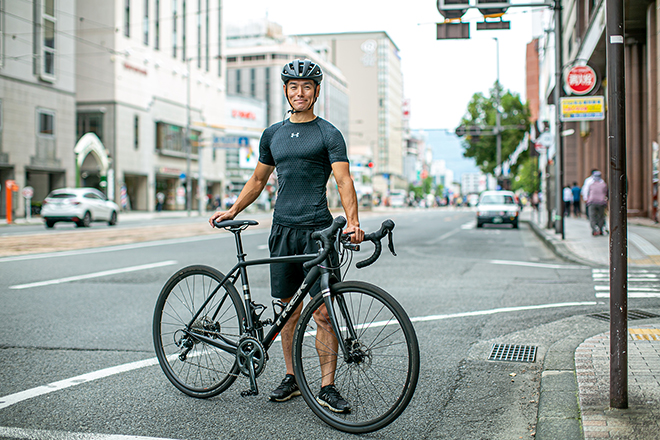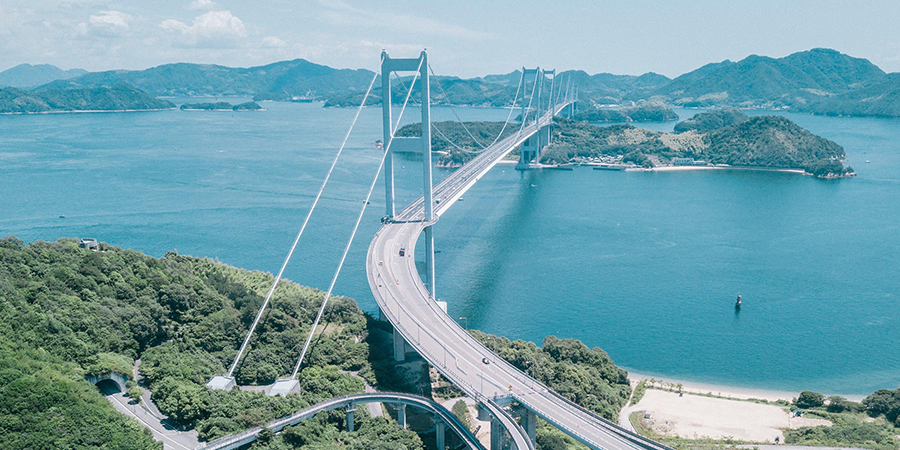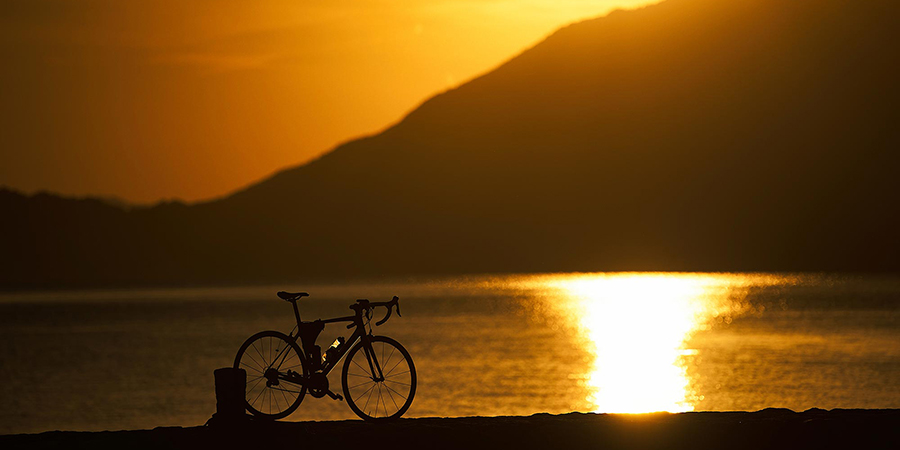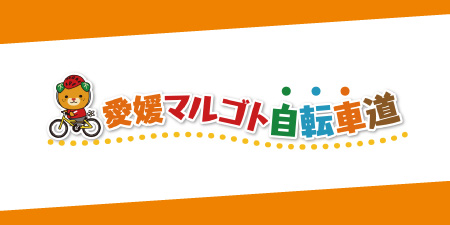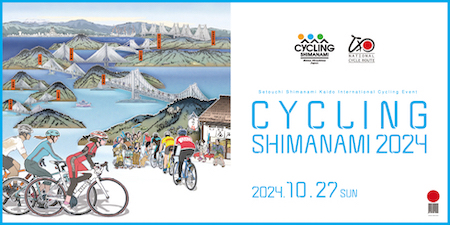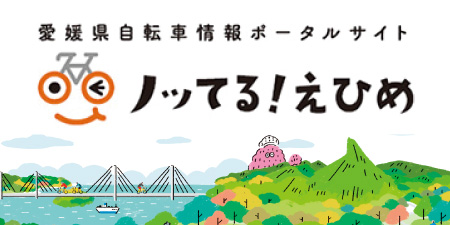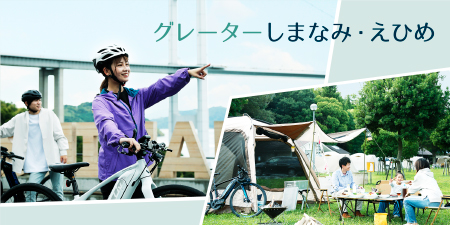Basic Cycling Tips to Make Your Trip to
Matsuyama and the Dogo Onsen More Enjoyable!
Basic Cycling Tips to Make Your Trip to Matsuyama and the Dogo Onsen More Enjoyable!
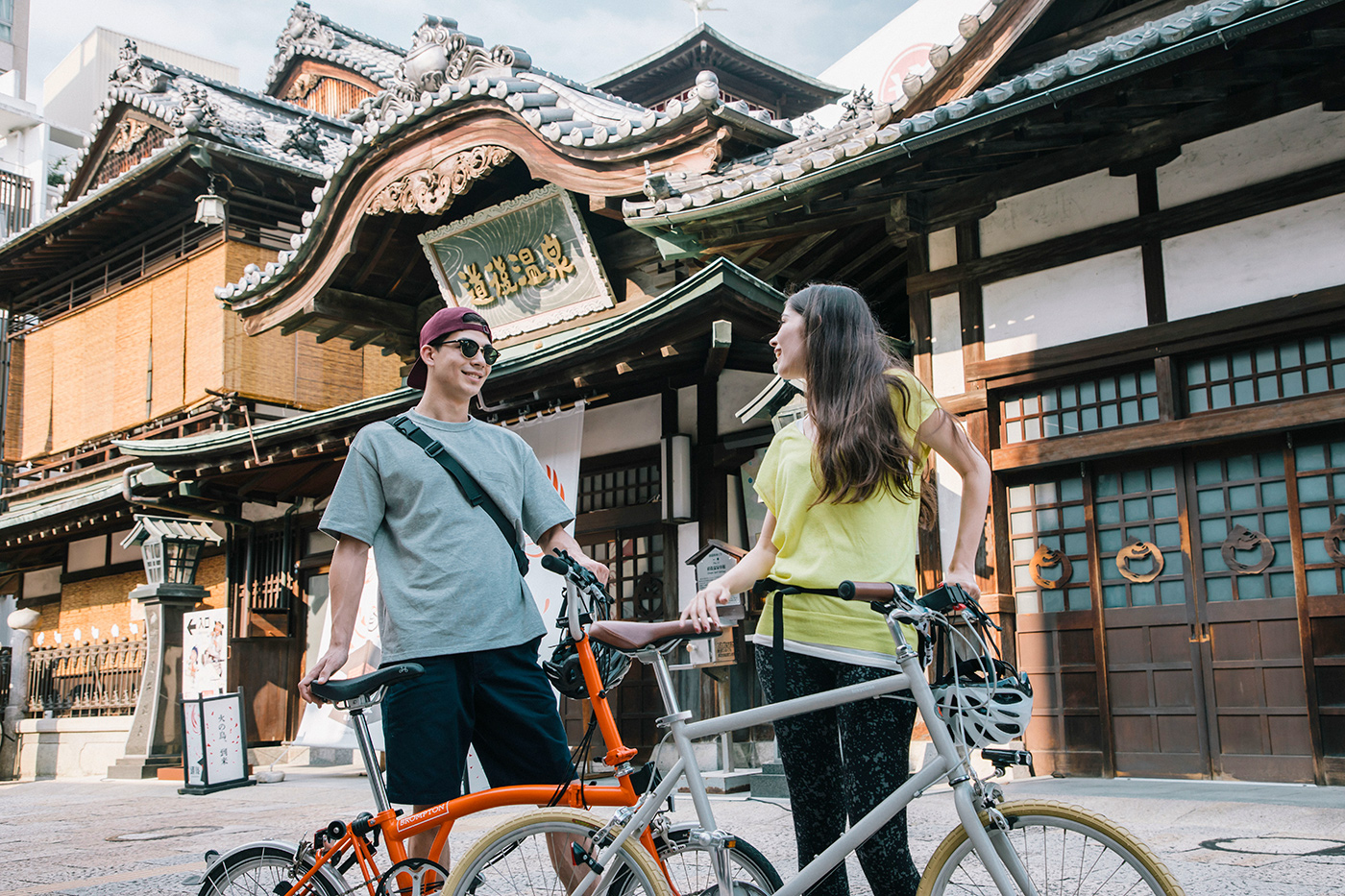
Matsuyama, situated in the middle of Ehime Prefecture, is a popular destination for tourists with Matsuyama Castle, great dining, and the Dogo Onsen which is said to have a 3,000 year history. The area is also known as the location for the novel “Botchan” by Natsume Sōseki.
Bus and trolley service is available within the Matsuyama city center and is used by many tourists, but adding bicycles to that mix is sure to make any trip even more enjoyable.
To that end, we interviewed mountain bike rider and athlete Yasuaki Nishiyama, born and raised in Matsuyama, to learn about why Matsuyama and the Dogo Onsen should be enjoyed by bicycle, things to watch out for when riding, and hole-in-the-wall destinations only the locals know about.
Bicycles are ideal for Matsuyama, a compact city with numerous narrow alleys
Matsuyama is the largest city in the Shikoku region with a population of close to 510,000 people. The city was formerly a castle town that developed around Matsuyama Castle, itself built roughly 400 years ago. In addition to Japan’s oldest hot spring, Dogo Onsen, which is said to have a history extending 3,000 years into the past, the city was also well known to such literary leaders of Japan as Natsume Soseki and Masaoka Shiki, and has been designated as a Global City for Hot Spring Culture.
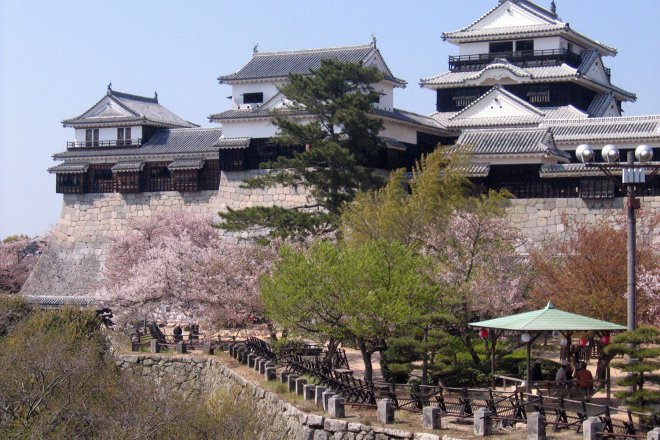
Matsuyama Castle

Matsuyama
As a result of the Compact City policy, numerous enjoyable points of interest are concentrated in an area of just 1.5 kilometers radius, such as the station department store, the Okaido Shopping Street with its massive arcade, Matsuyama City Park, “Botchan” Stadium, The Museum of Art, Ehime, and the Shiki Memorial Museum.
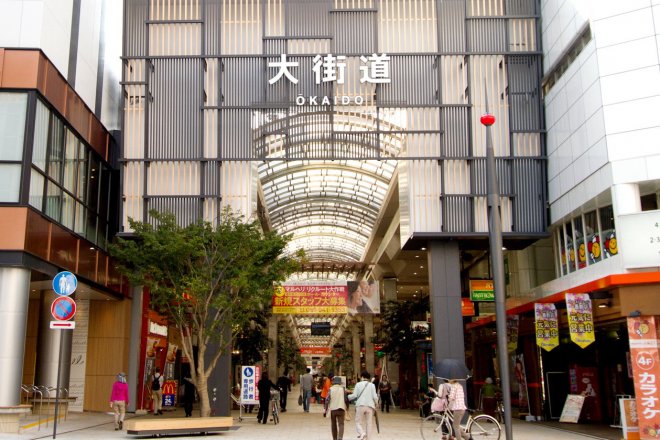
The Okaido Shopping Street with its massive arcade
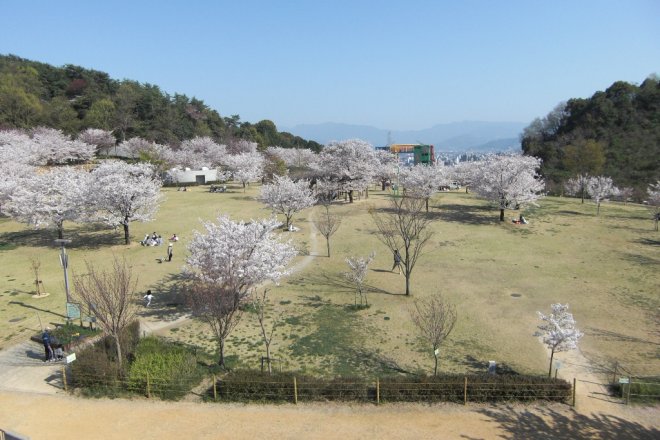
Matsuyama City Park
The downtown Matsuyama area, representing the former castle town, features a layout similar to Kyoto with vertical and horizontal roads in a grid pattern. There are many narrow alleys, however, and no shortage of one way streets, making it somewhat inconvenient for outsiders to get around by car.
While many travel through the city by transferring between the trolleys and busses, the available routes are biased towards major roads and points of interest.
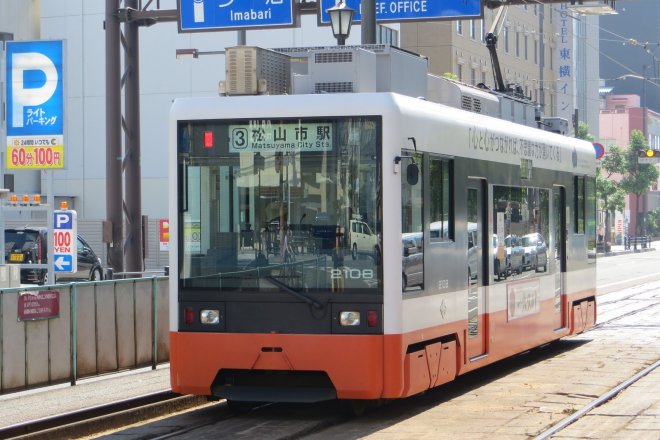
Trolley in Matsuyama, Photo: Joel Abroad on Visual Hunt / CC BY-NC-SA
This is why traveling by bicycle is recommended. Bicycles allow you to easily explore the flat and compact city of Matsuyama, and gain smooth access to local points of interest hidden away in those narrow alleys. It is of course also possible to reach the Dogo Onsen a little further away.
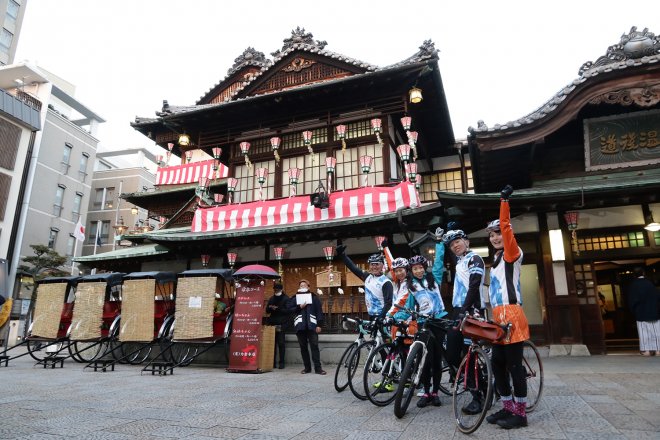
Cyclists at the Dogo Onsen
There are four bicycle rental ports within Matsuyama near Matsuyama Station, Matsuyama Castle, the Dogo Onsen, and the Okaido Shopping Street, offering a total of 50 bicycles for rent.
The supply includes not only city touring bicycles (39), but also sporting sports bicycles (9) and even two electric bicycles. The sporting sports bicycles are ideal for cycling as they offer more agility than the city touring bikes.
Another piece of good news for those wishing to enjoy Matsuyama on their own bicycles is the Cycle Station provided at Matsuyama Airport. The Station provides services such as bike bag storage and, tool rental, bicycle assembly, a space for pumping up tires, and even a changing room.
Have more fun by bicycle! Points of interest in Matsuyama and the Dogo Onsen area
So, when actually touring Matsuyama by bicycle, what are the specific ways you can have fun? We asked mountain bike athlete and writer rider Yasuaki Nishiyama, born and raised in Matsuyama, for the low down lowdown.
Nishiyama: To start, the one thing you cannot miss is the Dogo Onsen. You can get to it using the trollies and busses, but you can also get their there from the city center by bicycle in just 15 to 30 minutes.
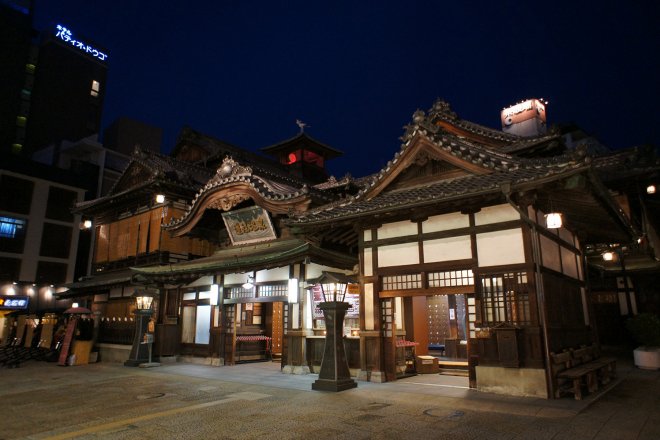
Dogo Onsen
Nishiyama: There are two city operated bicycle parking spots in front of the Dogo Onsen trolley station that are open 24 hours and free of charge. You can enjoy the hot spring at your leisure without worrying about catching the train home, and instead take in the night air as you bike back to your hotel; which will deepen the mood that you are on a journey.
And once you’ve biked to Dogo Onsen, I highly recommend that you go just a bit further along the foot of the mountains from the hot spring to visit Ishite-ji Temple.
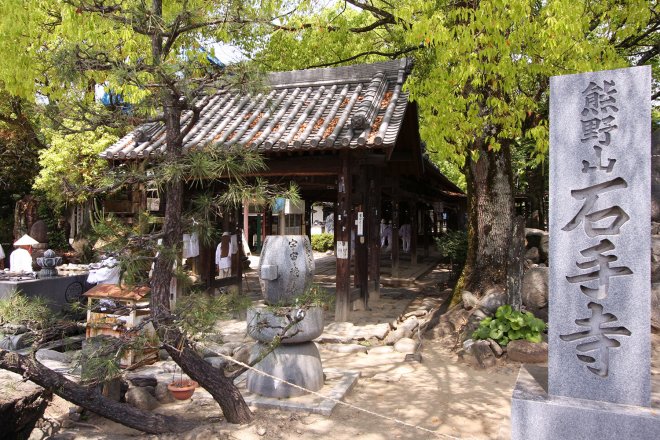
Ishite-ji Temple
Nishiyama: This temple is far from the trolley station and about a 20 minute walk from Dogo Onsen, but just a quick trip by bicycle.
Built roughly 1,300 years ago, this temple is number 51 on the Shikoku 88 temple pilgrimage, and most of the collection of historical artifacts held there are designated as National or Important Cultural Treasures. There is also a rare example of a cave situated within the temple which is certainly worth a look.

Ishite-ji Temple
Nishiyama: The Goju-Ichiban Shokudo cafeteria within the temple grounds offers freshly made Yaki-mochi rice dumplings with Koshian sweet bean paste inside that are thin and soft and quite tasty.
There are also points of interest I recommend on the opposite ocean side of Matsuyama from the Dogo Onsen that are particularly accessible by bicycle. You can enjoy the sea air up close if you ride south along the seaside tracks from Horie Station, just north of JR Matsuyama Station.
Nishiyama: Takahama and Baishinji stations on the Iyotetsu Takahama Line on that route have served as locations for famous TV dramas in Japan. There are also several restaurants around Baishinji Station that serve Taimeshi (sea bream and rice), one of the leading dishes in local Ehime cuisine. Here, the taimeshi is notable for the fact that the rice is cooked in the Takikomi-gohan style which the ingredients are included as the rice is steamed.

Taimeshi in the takikomi-gohan style
Nishiyama: If you go even further to Mitsuhama Port, there are still you can find small old-school ferries still in operation which will get you to the opposite shore free of charge. This is sure to be an experience that is out of the ordinary and give you a real sense that you are on a journey.
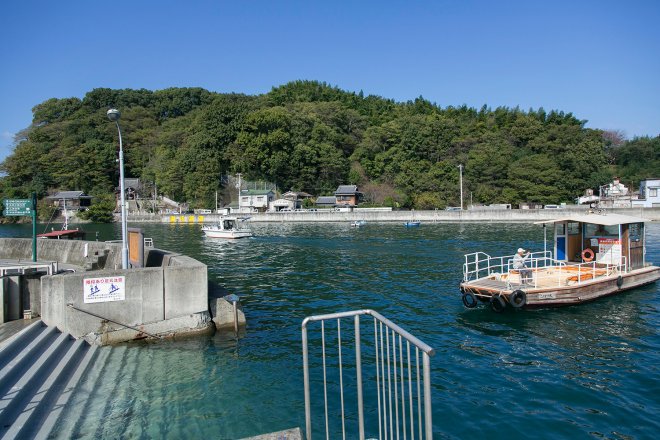
Old-school ferry at Mitsuhama Port
Nishiyama: All weekend and holiday trains on the Iyotetsu Takahama Line are operated as so-called cycle trains which go as far as Matsuyama City Station, so you can take the train all the way home if you get tired of cycling.
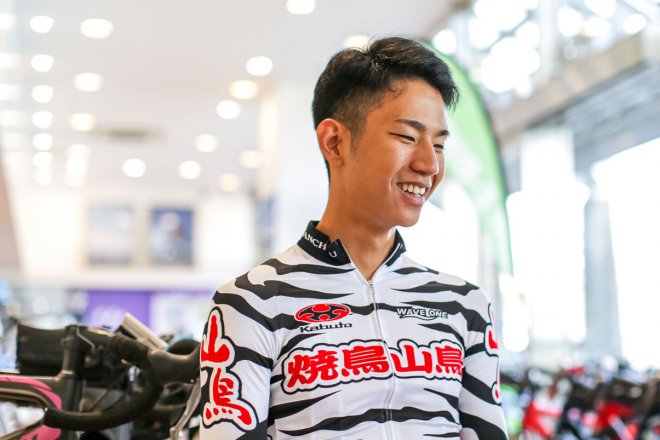
Yasuaki Nishiyama
Cycling basics to enjoy your ride in comfort and safety
Finally, here are some important points for enjoying your cycling trip in safety and comfort.
・Clothing
Matsuyama city and the Dogo Onsen are very popular destinations for tourists, but we recommend dressing in clothes conducive to cycling, rather than normal tourist attire, even when using the simpler city touring bicycles.
For example, wearing a skirt is dangerous because the cloth can get caught up in the chain or wheel, and you may miss out on some of the scenery if your attention is focused on preventing that.
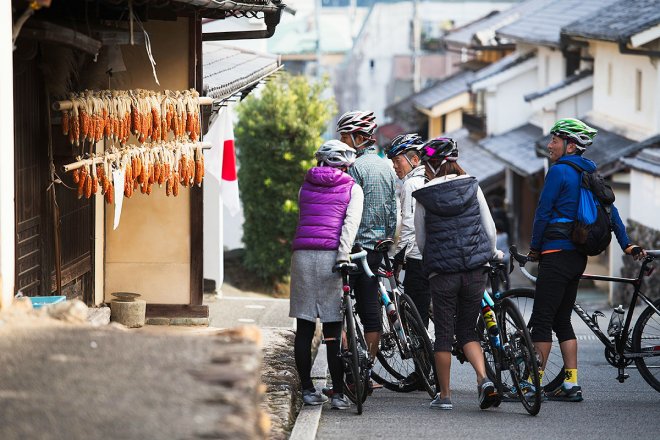
Be aware that even with clothing easy to move in, there is still the risk that the hem of long coats, shoe strings, or backpack straps can get caught in the bicycle.
Make sure there are no hanging strings and tie your shoelaces firmly so they do not come undone, and tie excess backpack straps around your waste.

Be careful not to ride with backpack straps hanging loosely
・Bicycles ride on the left
While you may feel carefree when riding, bicycles are actually vehicles subject to road traffic laws. The first and biggest rule is that bicycles ride on the left side of the road. There are some roads, such as the Shimanami Kaido and several within Matsuyama city proper, that have dedicated bicycle lanes on the left which are the safest places to ride.
Furthermore, you are allowed to ride on sidewalks that say bicycles are allowed (via the Japanese sign 自転車通行可) in areas where the roads are dangerous due to heavy traffic, though it may be scary to ride in close proximity to cars until you get used to it. When riding on sidewalks, be sure to give priority to pedestrians.
・As a rule, set the saddle height so that your toes just reach the ground when seated.
Bicycles are much easier to ride if you first adjust all the various parts to your body size. Doing so reduces fatigue and enables you to enjoy safe cycling.
The easiest part to adjust is the height of the saddle. Many people set the saddle too low because they think they should be able to place their feet firmly on the ground.
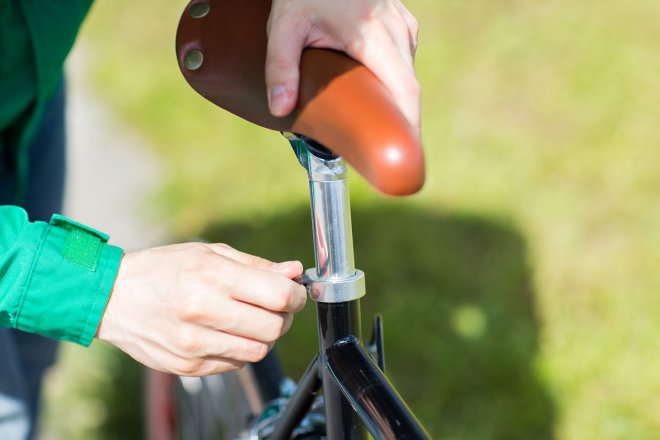
Saddle height for city touring bicycles
For city touring bikes, the saddle height should be such that your toes just reach the ground. This alone makes cycling much easier. Sporting bicycles should be set higher. The best height is when you straighten your legs and your heels just reach the pedals.
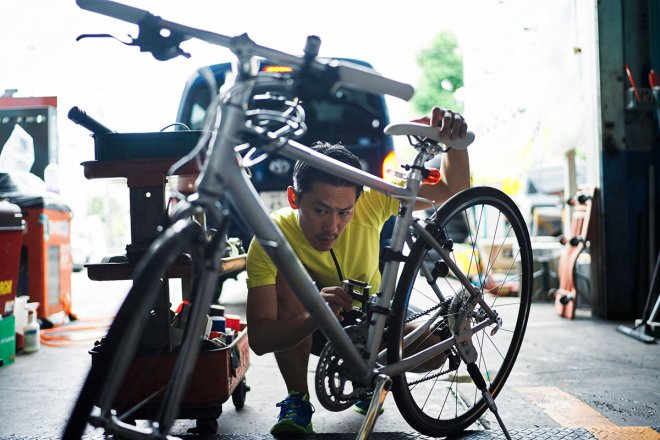
Saddle height for sporting bicycles
・Pump adequate air into the tires to prevent punctures
Bicycles move more sluggish when the air pressure in the tires gets too low, and there is increased risk of puncture when traveling over bumps. It is important to pump the tires to the correct air pressure to ensure a more comfortable ride as well as reducing the risk of punctures. Always check the air pressure of the tires before you start riding.
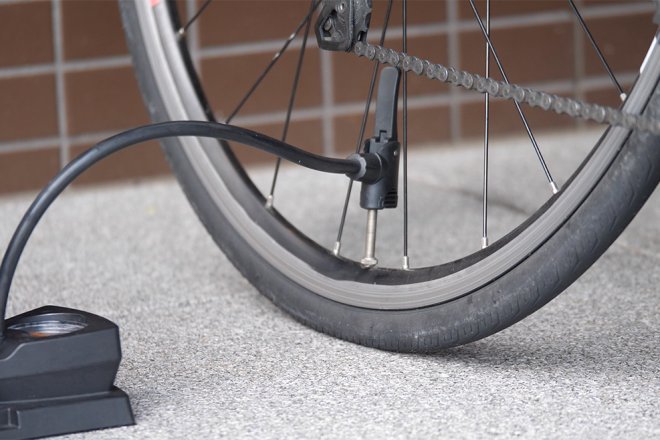
Check a bicycle tire
Ehime prefecture is perhaps the best prefecture in Japan that is truly making an effort in cycling. Many of the locals have deep knowledge about bicycles, so your cycling tour is sure to be more enjoyable than you can imagine.
PROFILE
Yasuaki Nishiyama
Yasuaki Nishiyama is a mountain bike rider and member of the Team Yamadori mountain bike team formed by professional rider Motoshi Kadota, who in turn is a member of Team Giant based in Imabari and competitive throughout the world. Nishiyama was born and raised in Matsuyama, Ehime prefecture. He is one of the hopes for the future of the sport and competes together with Kadota in domestic and international races.
Articles you might like
Related Routes & Destinations
We use cookies on this site to enhance your user experience. If you continue to browse, you accept the use of cookies on our site. See our cookies policy for more information.





